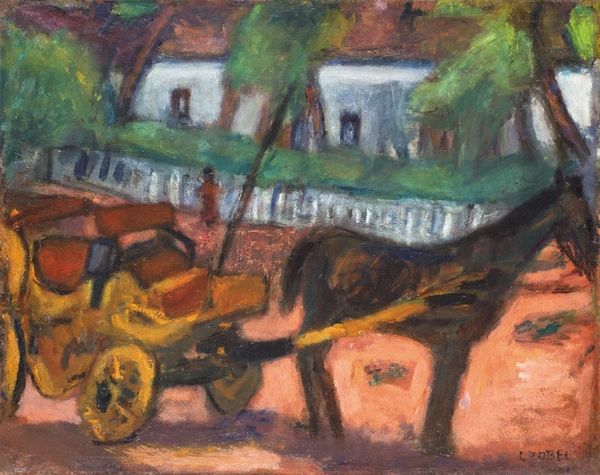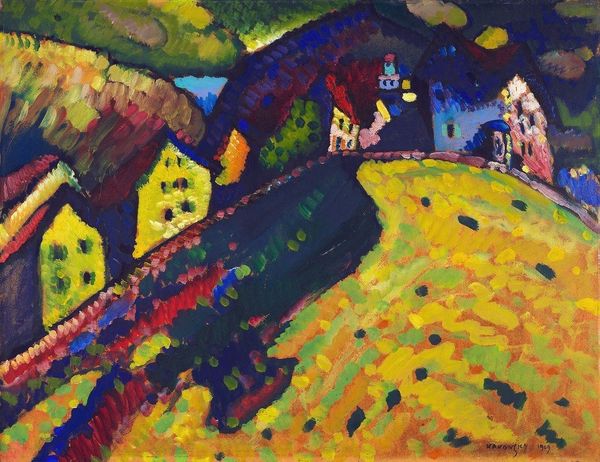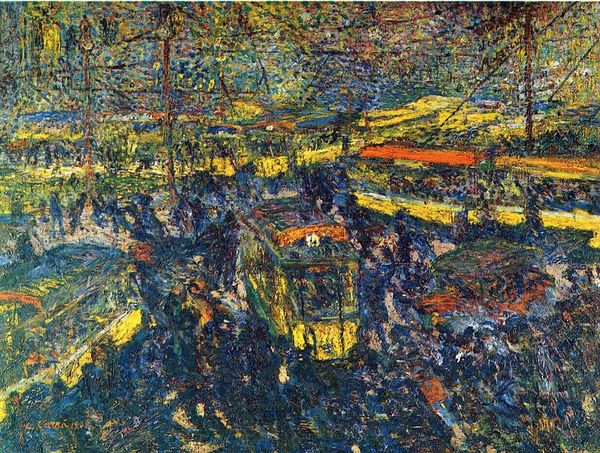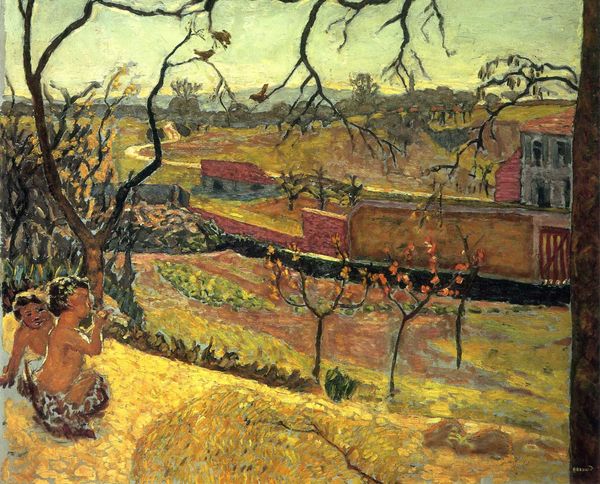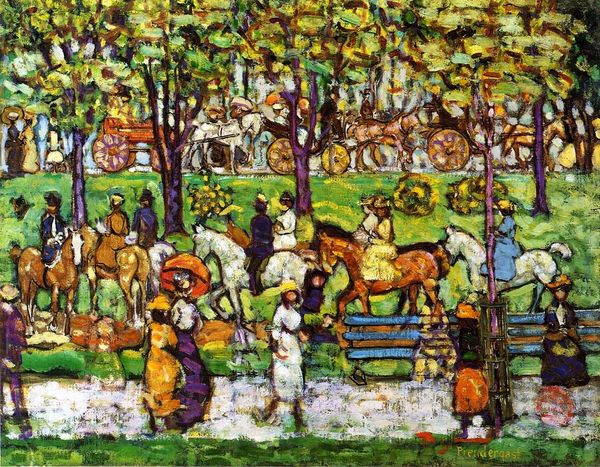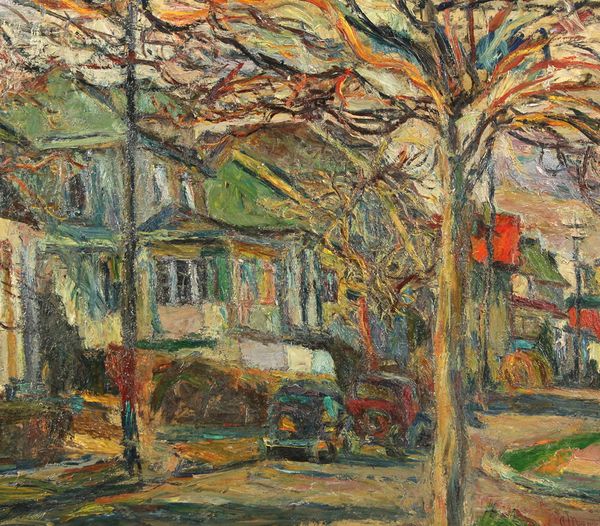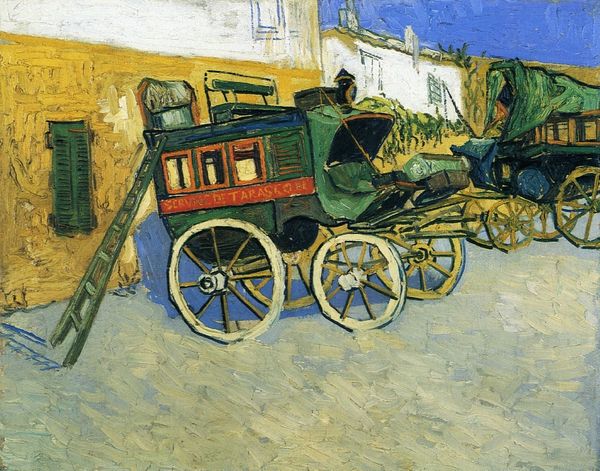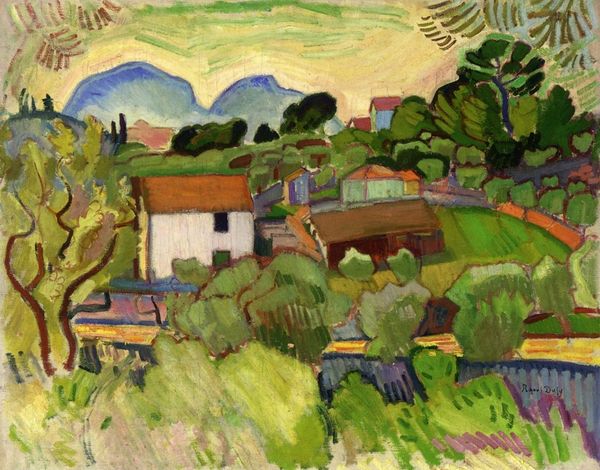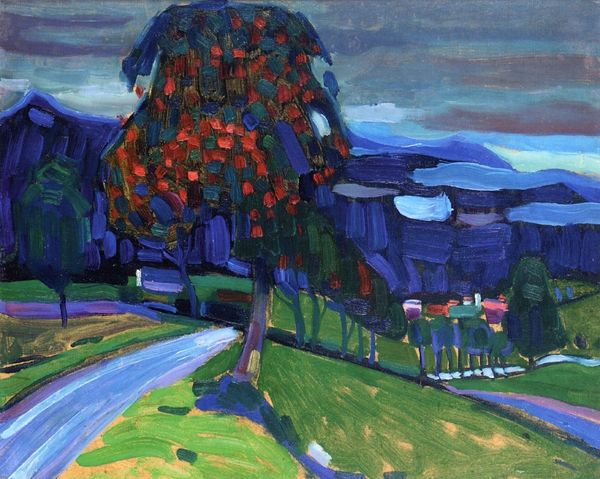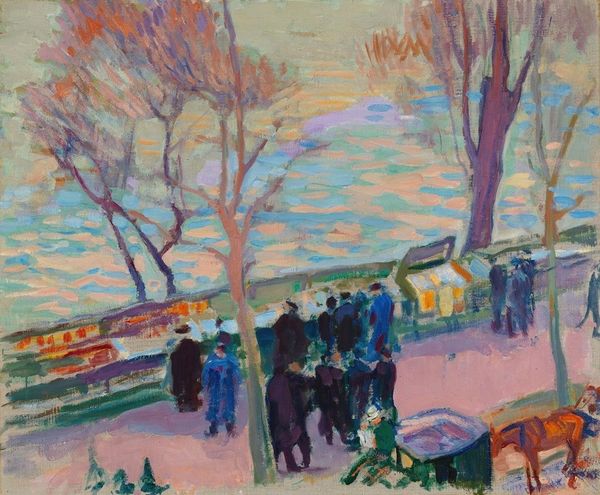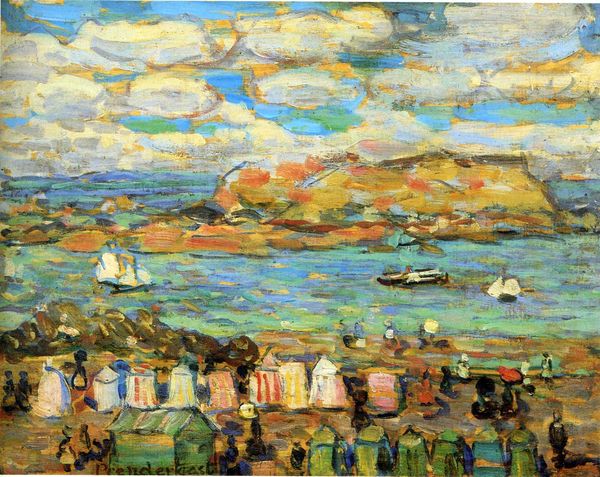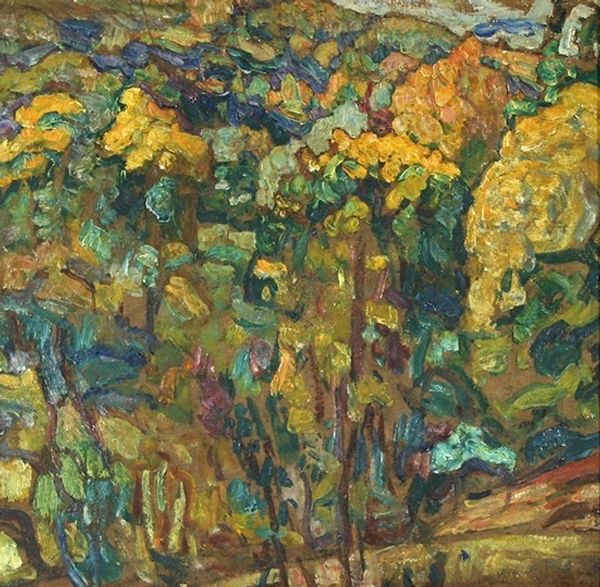
Dimensions: 26 x 34.61 cm
Copyright: Public domain
Editor: So, this is "Paris Omnibus," painted in 1907 by Maurice Prendergast, using oil on canvas. The whole piece vibrates with energy, and the colours seem almost jewel-like. What jumps out at you when you look at it? Curator: Well, immediately, I'm drawn to the way Prendergast renders this bustling urban scene. Consider the materiality itself: thick daubs of paint, applied almost haphazardly. It’s not about precise representation but about capturing the energy of modern life, and that connects directly to the working class experience of riding these omnibuses, packed in close together. It speaks to mass transit as a force, shaping experience of urbanity. Editor: I see what you mean. The colours aren’t realistic, but they somehow convey the feeling of a hot, crowded day. Do you think the choice of oil paint itself played a role? Curator: Absolutely. Oil paint allowed Prendergast to build up layers, creating a textured surface that mirrors the complex social fabric he's depicting. Think about who's on that omnibus. The masses crammed together, the democratization of movement across social class! These aren't formal portraits. It's about the collective, about labor, about a particular moment in Paris, when these technologies started connecting people in new ways. What do you make of that choice of capturing such fleeting scene, that feels very ordinary, at least for people using the omnibus? Editor: It's a powerful thought. The choice makes the mundane appear more grand. That brings forth questions of what stories matter to us in time. I hadn't considered the social implications of the omnibus itself as a means of production… it reconfigures public space and experience! Curator: Exactly! It really forces us to think about art not as a mere representation, but as a material engagement with the social and economic forces shaping society. What starts as simply enjoying color palette of an artist transforms, revealing production itself is the main event. Editor: It definitely gives me a different way of looking at impressionist art. Instead of just aesthetics, seeing the hard reality reflected, too. Curator: Precisely, we see those who engage with the "nuts and bolts" reality also construct artistic movements and make choices on how art reflects society and shapes class and culture. It shifts the discussion away from solely art history and instead frames production and consumption through a material lens.
Comments
No comments
Be the first to comment and join the conversation on the ultimate creative platform.

